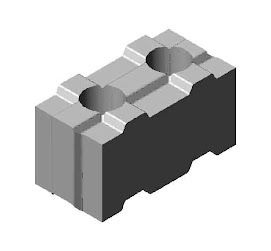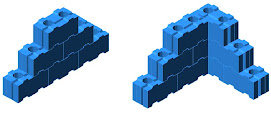Humans are known for building some very interesting structures. Regardless of when and what is built, structural engineering has always been a critical part of the process.Most any introduction to structural engineering will make mention of the pyramids of Egypt and Imhotep. Imhotep is the first engineer to be known by name. He was responsible for building an early pyramid around 2700 B.C. This would have been almost five thousand years ago. So, it is obvious that the ideas of structural engineering have been around for a very long time, but throughout the ancient world and into the medieval period, it was not a formal discipline. The wonder is that the early structural engineers were able to construct such large and impressive structures. They were the craftsman and the master builders.
Men of genius, like Leonardo da Vinci, were able to conceive of many of the designs that would become common in the field of structural engineering long before a true understanding of the scientific principals was reached. There was, certainly, much trial and error in the beginning. We do not know much about the projects that failed, or the collapses that were disasters. We only see the ruins of structures that were properly constructed and endured. The word "structural" comes from the Latin word "structus" that means "to pile, to assemble." This gives a clue to the definition of structural engineering.
Structural engineering is a discipline within the engineering field that deals with the construction of buildings and other structures with a special interest in the ability of the structures to withstand load. The idea of load refers to any outside force that might threaten the stability of the structure. Load could be simple such as gravity or wind velocity. It could also be more complex such as structure integrity and the ability to bear weight. The structural engineer is very much involved in the design phase of a project. It is not only buildings, but any object that must be constructed to bear load and stress. The design of a machine or tool might require the services of a structural engineer.
Someone once defined structural engineering as the use of materials we do not understand to build structures that can withstand forces we can not conceive of while satisfying a public that has no idea what they are asking. There is some truth to this, perhaps, but structural engineering has made rapid strides in the last century. The list of buildings that have been built in the last 50 years is quite impressive. The use of the computer has been a big help to the field with its ability to model designs and predict stress.
Structural engineering does not get much publicity until there is failure. The collapse of a bridge in the United States recently made the news and focused attention on the structural integrity of bridges. The horrible collapse of the World Trade Center building also was a text book case of structural second guessing. The challenge of the structural engineer today is to make buildings and machines that can not only resist the ravages of nature, but also the deliberate attempts of man to destroy them.
Aazdak Alisimo writes about structural engineering for ProStructuralEngineers.com where you can find a directory of structural engineers across the country.
By:Aazdak_Alisimo
JO & ASSOCIATES
Consultant - Contractor - Interior - Producer of "BATA INTERLOK"
contact us:
Email: antonjo@bdg.centrin.net.id
Phone/Fax: +62-22-5419698
HP: +62-22-76692727 or +62-8122387982
contact us:
Email: antonjo@bdg.centrin.net.id
Phone/Fax: +62-22-5419698
HP: +62-22-76692727 or +62-8122387982
4.1.09
Structural Engineering - A Guide
FOR SITE AT INDONESIA COUNTRY ONLY
DESIGN AND BUILD
for structural, architectural and interior.
Our email address: antonjo@bdg.centrin.net.id
for structural, architectural and interior.
Our email address: antonjo@bdg.centrin.net.id








